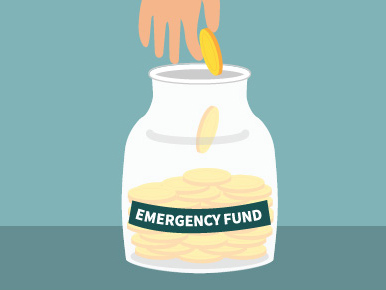There's nothing like a sunny day to put Kiwis in a great mood. That's when we flock in droves to the great outdoors, be that a pristine beach, a scenic walking track, or just our backyard.
But as great as sun exposure is for our spirit and immune system (being a source of vitamin D), there can always be too much of a good thing. As New Zealanders, we know the risk all too well: with more than 2,000 melanomas and 80,000 non-melanoma skin cancers being reported each year, New Zealand has the highest incidence of skin cancer in the world.
The good news is that sun damage can be prevented, if you know how. So we've combed insurance providers' websites for some sun smarts, to help you beat the rays and stay safe.
What's your personal risk?
According to nib, it's important to shed light on some big sun safety myths. One of these is that darker-skinned people or those who tan easily are not at risk of skin cancer. While it's true that people with people with fair skin are more susceptible to sun damage, anyone can experience it.
As Fidelity Life points out, many factors can affect our personal risk, including our family or personal history of skin cancer, fair hair, sunbed use, and number and size of our moles. And of course, how we expose ourselves to the sun matters: the Cancer Society estimates that over 90% of skin cancer is due to prolonged exposure to UV radiation.
When to be 'sun smart'
Contrary to popular belief, sun safety is not just a summer thing. Those harmful UV rays are out all year round, rain or shine: in fact, as nib reminds us, "sun damage may even be more intense on overcast days due to UV rays reflecting off the clouds."
Having said that, the Cancer Society recommends taking extra care from September to April, especially between 10 am and 4 pm, when UV radiation levels are at their highest. You can check UV levels anytime on the free UVNZ app, or via the Metservice weather forecast for your area. This way, you'll know when to seek shade and wear protective clothes, like long-sleeved tops or a wide-brimmed hat. And it may seem counterintuitive, but the darker the clothing, the better the protection.
What to look for in your sunscreen
Finding shade is a great way to protect yourself from the sun, according to Asteron Life. But of course, you also need a little help from (quality) sunscreen as well.
It's a good idea to choose broad-spectrum protection (for both UVA and UVB), and a sun protection factor (SPF) of at least 30. Also, make sure the product you pick has AS/NZ 2604 on the label, meaning that the sunscreen meets the Australian and New Zealand standard.
Are you using sunscreen correctly?
According to nib, it's a common belief that sunscreen should only be applied when we step outside, and that it never goes out of date.
The Cancer Society recommends applying sunscreen 20 minutes before going outdoors, reapplying it every two hours (or more often if you're swimming or sweating it off). How much is enough? Short answer: seven teaspoons for the whole body. One teaspoon to each arm and one to the face, including ears and neck. And at least a teaspoon to each leg, the front and the back of the body.
Like to know more? A study quoted by Fidelity Life has found that most people apply only 20-50% of the amount of sunscreen they need: here are some areas you might be overlooking.
As for expiry dates, yes, sunscreens have a shelf life: typically, they are effective for three years after being opened (if you store them in a cool, dark place). Make sure you check the date next time you head to the beach.
Give your skin a health check
Sun safety helps reduce the risk, but make sure you also keep your skin in check. As AIA points out, every now and then it's a good idea to do a full body check, from head to toe, in front of a full-length mirror, so you can see your back as well. Or, you can ask a friend or family member to help you with the areas that are difficult to see.
When it comes to moles, Skin Smart New Zealand suggests following the ABCDE guidelines, looking for Asymmetry, Border irregularity, Colour variation, Diameter, and Evolving. Keep in mind that moles are common, and see one change isn't necessarily cause for alarm. But it's always best to let a doctor assess that.
How health insurance can help
Health cover is designed to help you afford medical care, right when you need it. And that includes your skin. Many insurers provide cover for skin procedures like cryotherapy or lesion removal.
If you're looking for health insurance for the first time, our handy quote compare tool is a great place to start. And for any questions you may have, our friendly LifeDirect advisers are here to help: Click here to send us a message, email us at team@lifedirect.co.nz or give us a call on 0800 800 400.
Disclaimer: Please note that the content provided in this article is intended as an overview and as general information only. While care is taken to ensure accuracy and reliability, the information provided is subject to continuous change and may not reflect current developments or address your situation. Before making any decisions based on the information provided in this article, please use your discretion and seek independent guidance.










